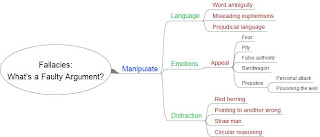
Chapter 2 is about Developing Your College Vocabulary by learning new vocabulary you are building important reading strategies. Building vocabulary is one of the most significant impacts on student Achievement, by expanding your vocabulary; you increase your understanding in knowledge.
Developing your vocabulary is about learning or understanding the words of textbooks information. It builds an important reading strategy and increases your ability to speak and write well to communication effectively. It allows you to fully understand and increase your word power and chances of getting job of your choice what you desire for. Developing Your Vocabulary; reading and listening comprehension will improve more words. You can use these important strategies to help you figure out the meaning of unfamiliar words: context clues and word part analysis, writing in your textbook, creating word maps, understanding denotation and connotation, journal writing, and the card review system. One of the best ways of making word a part of your vocabulary is the use of it in your daily life.
Reading is an important way to learn new words and in rich your vocabulary in Daily life, by writing a journal on regular basis you will improve.
Exercise 2a, Context Clues,P36
2.She was so overcome with joy by the birth of her baby that she was able to say nothing other than that the whole experience was simply ineffable.
c. incapable of being expressed in words
3. Most of us eventually reach our goals, but life’s path to success is often a circuitous one.
c. marked by roundabout or indirect procedures
4. The preacher took a pedagogic approach with the sermon, hoping that those attending would learn something meaningful from it.
a. instructional
5. Although teaching is not a lucrative profession, I know that I wouldn’t want to
do anything else. Helping others learn is far more important to me than money
c. well paying
6. Buying the lottery ticket is a very capricious way to plan for your future. The chances of winning are 1 in 10,000,000.
d. unpredictable
Exercise 2b, Context Clues in Textbooks,P37
(1).Alcoholism exacts a horrible toll on the drinker and on the drinker's family, but the damage doesn't stop there. Drunk driving, workplace losses, and issues related to alcohol abuse. The search for effective methods of intervention has never been more intense.
B - Forces.
(2)The natural circadian rhythm of most animals, including humans, is 25 to 26 hours, but our internal clocks easily adapt to the 24-hour rhythms of the turning earth. When we are isolated from environmental cues, our sleep/wake cycles continue to be rather constant but slightly longer than 24 hours.
B - Daily behavioral cycle.
(3) when the commissioner of Indian affairs took office in 1933,he vowed to defend Indian rights. the conciliatory attitudes of the commissioner and the Indian office, regarding Indian rights, conformed with legal precedents established by state and federal courts.
B - agreeable, accommodating.
(4) Our own daily rhythms can become desynchronized when we take a cross country or transoceanic flight. if you fly from los Angeles to new York and then go to bed at 11pm.Eastern standard time, you may have trouble falling asleep because your body is still on west coast time.
Definition: Broken or full apart.
(5)if my argument so far has been sound, neither our distance from a preventable evil nor the number of other people who, in respect to that evil are in the same situation as we are, lessens our obligation to mitigate or prevent that evil’s shall therefore take as established the principle i asserted earlier. As I have already said need to assert it only in its qualified form; if it is in our power to prevent something bad from happening, without thereby sacrificing anything else morally significant, we ought, morally, to do it.
Definition: Seize, stop.
Exercise 2d, Roots,P41
1) Equal - same, similar.
2) circumscribe - event, situation.
3) Predict - expect, girt.
4) Untenable - not able to held or excessive.
5) Currently - recently.
6) Extend - to expand or give more time.
7) Extensible - capable to be extended.
8) Scribble - one who writes or copies writing.
9) Retentive - recover.
10) remit-to sends back or remind.
Exercise 2f, Prefix – Create a Word,P43
1) A prefix that means good or well is bene, benefit, benediction.
2)A prefix that means out is Ex-exist-exfoliate.
3)A prefix that means skill is techn-technology-technical.
4)A prefix that means bad is mal-malevolent-malicious.
5)A prefix that means against is anti-antibacterial-antivirus.
6)A prefix that means half is semi-semicolon-semisweet.
7)A prefix that means after is meta-metabolic-metallic.
8)A prefix that means many is nulti-multiple-metallic.
9)A prefix that means more than usual is hyper-hyperactive-hypervetilate.
10)Aprefix that means before is ante-antecedent-antemeridian.
Exercise 2h, Create Words with Suffixes,P45
1)one who professes knowledge-professor.
2)able to mend-mendable.
3)full of spite -spiteful.
4)like a mother-motherhood.
5)characterized by harmony-harmonious.
6)a beginning,start or graduation-preparation.
7)sad at feeling alone-sadness.
8)a scientist who specialises in chemistry-chemist.
9)the act,practise,or profession of istructing-instructor.
10)unable to manage by oneself.dependent-dependant.
Exercise 2i, Identify the Roots,P46
1.harmlessly-harm.
2.controversially-controversy.
3.commercialization-commercial.
4talkatively-outspoke.
5.mindlessness-mind.
6.simplisstically-simple.
7.neighbourliness-neighbour.
8.wakefulness-wake.
9.peacefully-peace.
10.sinfulness-sin.
Exercise 2j, Define the Following Words,P46
1)maltreat-to treat badly,to abuse.
2)autonomous-self worth.
3)emit-to duke away.
4)fidelity-to be faithful.
5)convey-to agree or give regards.
6)equivocal-equilibrium.
7)posthumous-after.
8)carnal-flash.
9)misogynist-wrong.
10)synchronized-together.




















